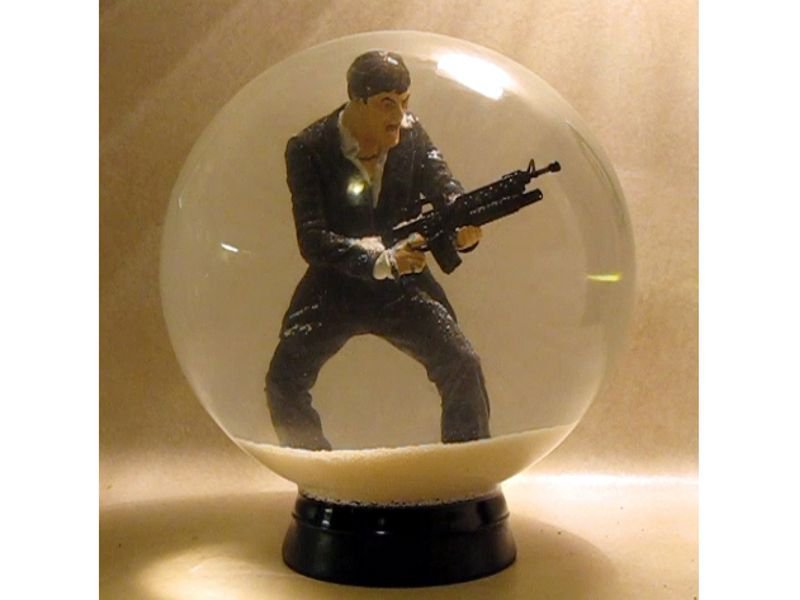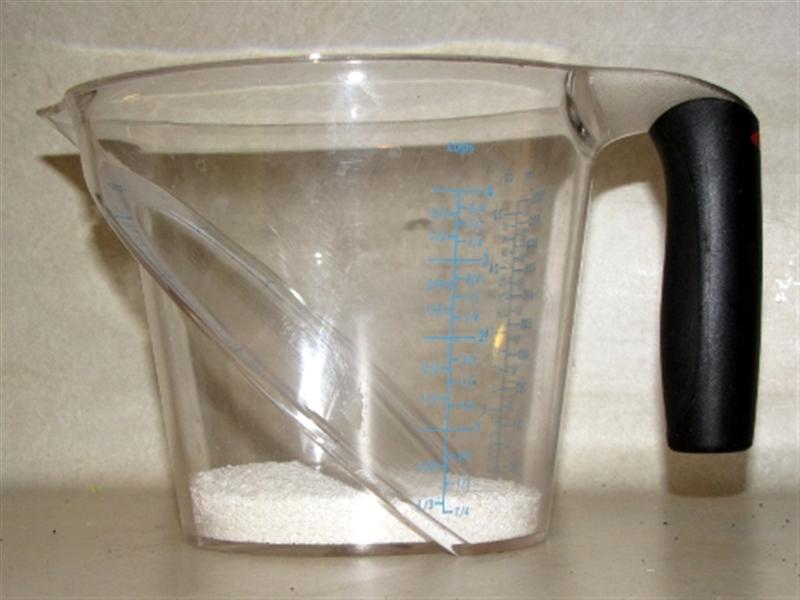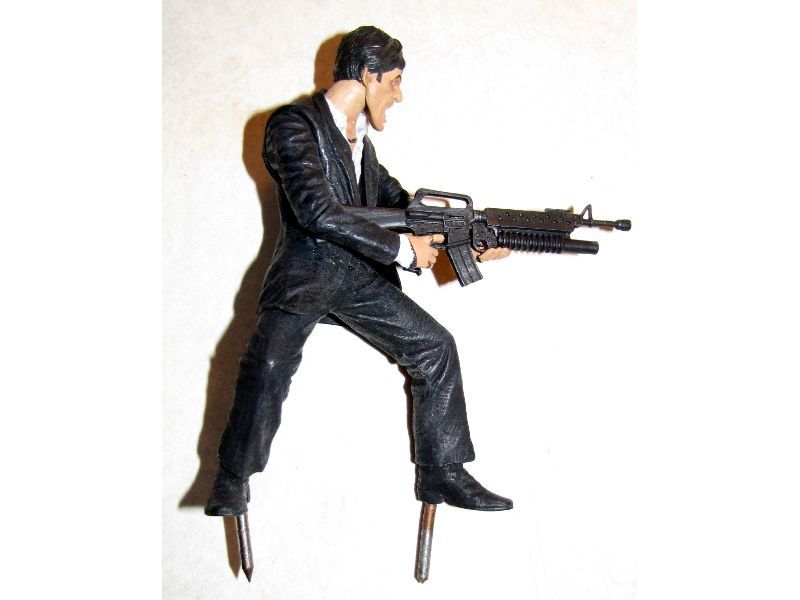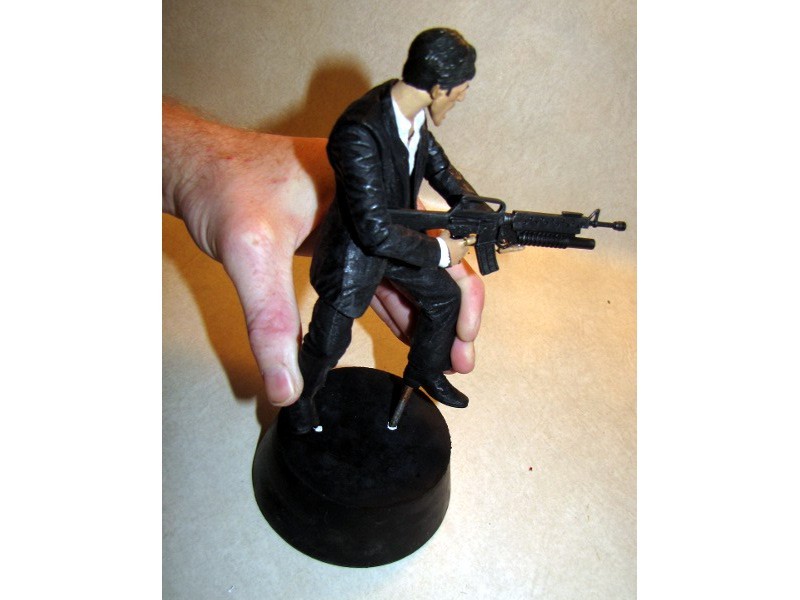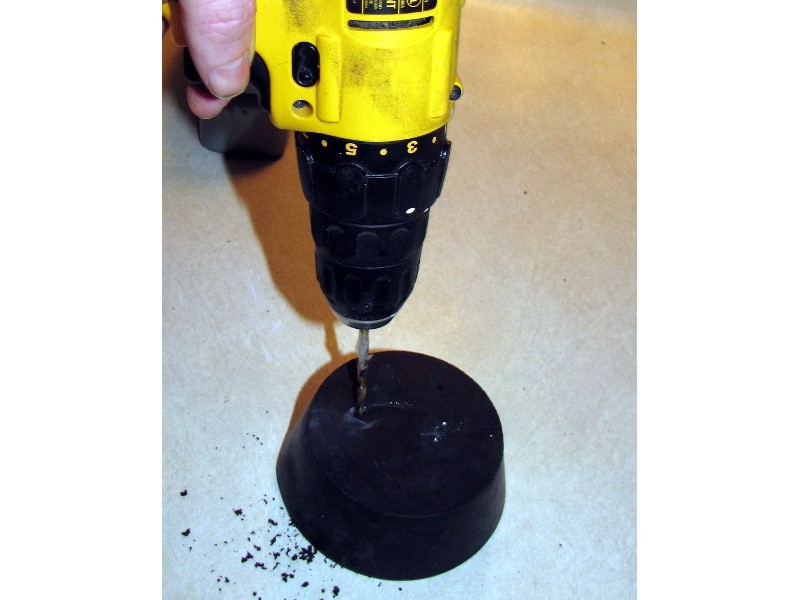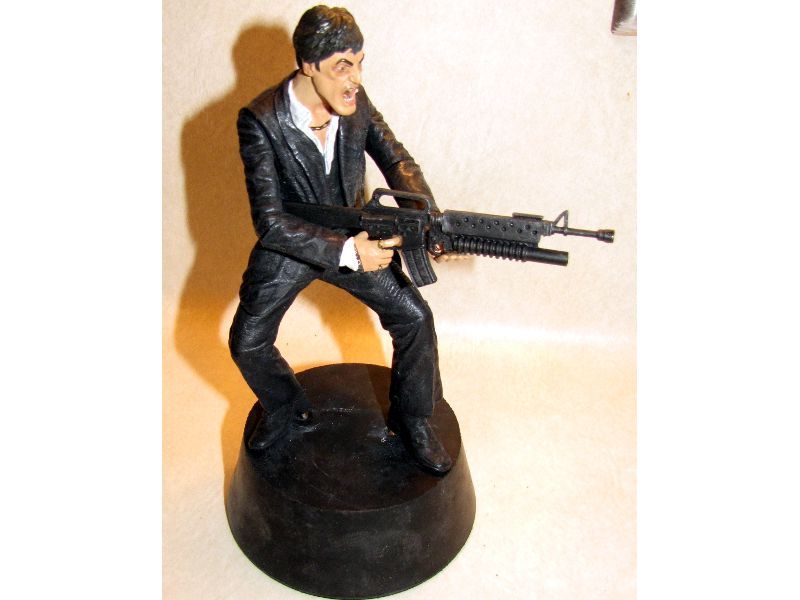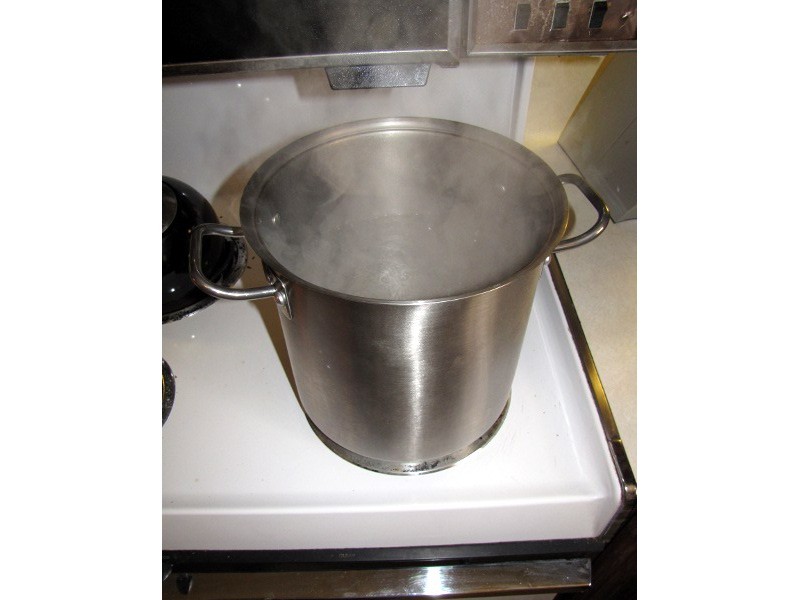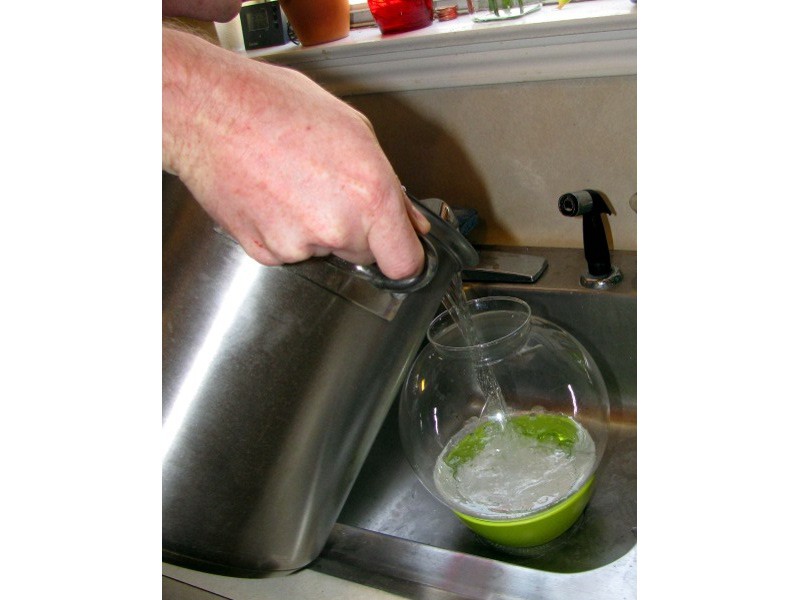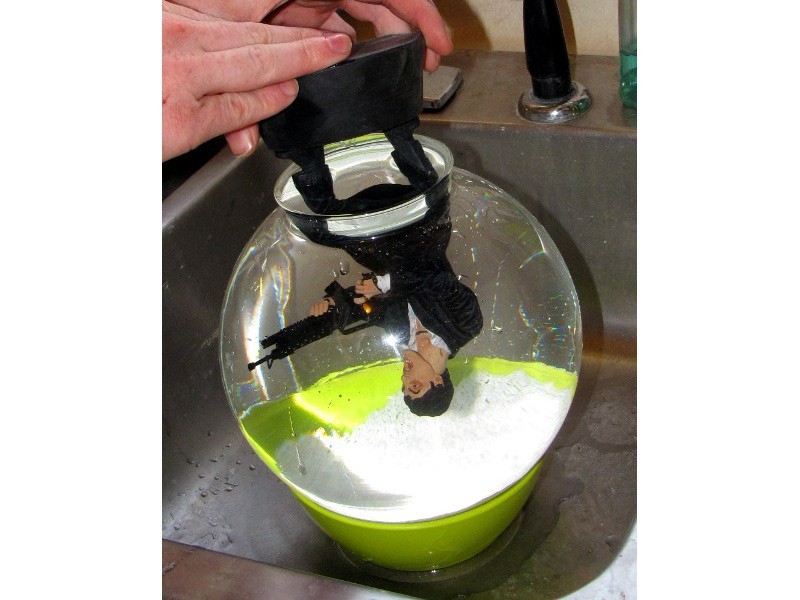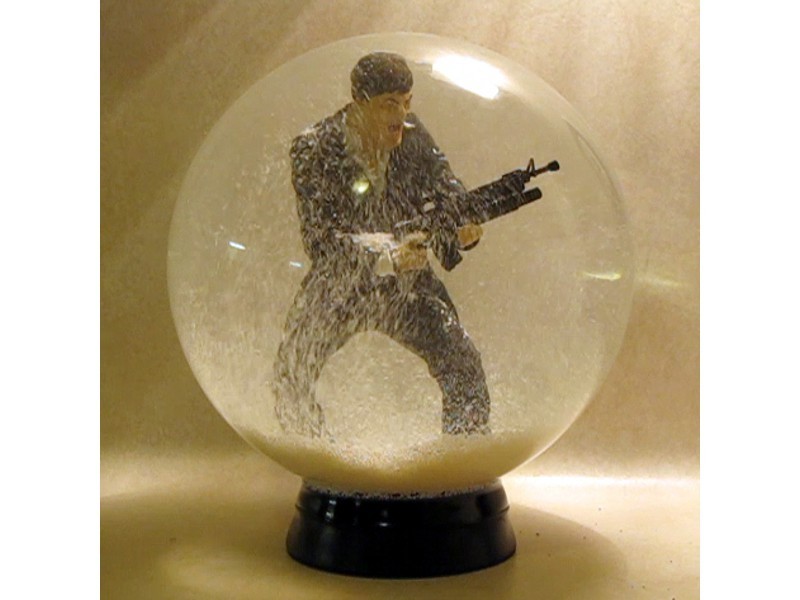This project began when I, myself, realized that deep need–that every man knows sooner or later in his life–which can only be satisfied by a say-hello-to-my-little-friend snow globe. I scoured the tubes looking for a suitable Tony Montana figurine, and though I found several, the only one featuring suitable full-auto-enraged-coke-frenzy action was MezCo Toys‘ Tony Montana (“The Fall” version), which is 7″ tall. That’s way too big for even the largest empty snow globe I could find. (It turns out, incidentally, that sourcing empty snow globes online is a bit of a trick. There are a couple of crappy kits on Amazon, and a predictable selection of snow-globe photo frames, but for the real stuff you have to go to snowdomes.com.)
So I was forced to consider other options. Then one day at the hardware store I looked at a shelf full of glass lamp globes and the light bulb went on. And although the round, perfectly clear variety is a bit harder to find, I was able to run one down on eBay without spending too much time on it. The globe I used is made of glass, 8″ in diameter, and features a 3.5″ opening, which are ideal dimensions for the MezCo Tony Montana. Turns out the same globe is available in clear acrylic, and frankly that would be a better choice because of the reduced weight and danger of breakage.
Next I had to figure out how to seal the opening. It wasn’t long before I remembered seeing, in some lab that I worked in at some point, a really giant black rubber stopper. It took a bit of research, but it turns out the biggest rubber stopper manufactured, which is #15, fits very well into a 3.5″ globe opening. These stoppers are commonly available in natural (i.e. off-white) and black rubber. I found a black #15 rubber stopper on eBay for not too much, and was able to figure out a clever way to seal it tightly into the neck of the globe without having to use adhesive, sealant, or tape.
The final problem was the snow itself. Turns out the composition of snow globe snow is a closely guarded trade secret, and although you can buy small packets of it as part of commercial snow globe kits, I couldn’t find anyone selling it in bulk. Glitter can be used for this purpose, but it was totally inappropriate to serve as snow in the context of my vignette. A craft site put me on to the idea of using crushed eggshells, but it took some experimentation to figure out how to treat, clean, and grind them to make good snow.


